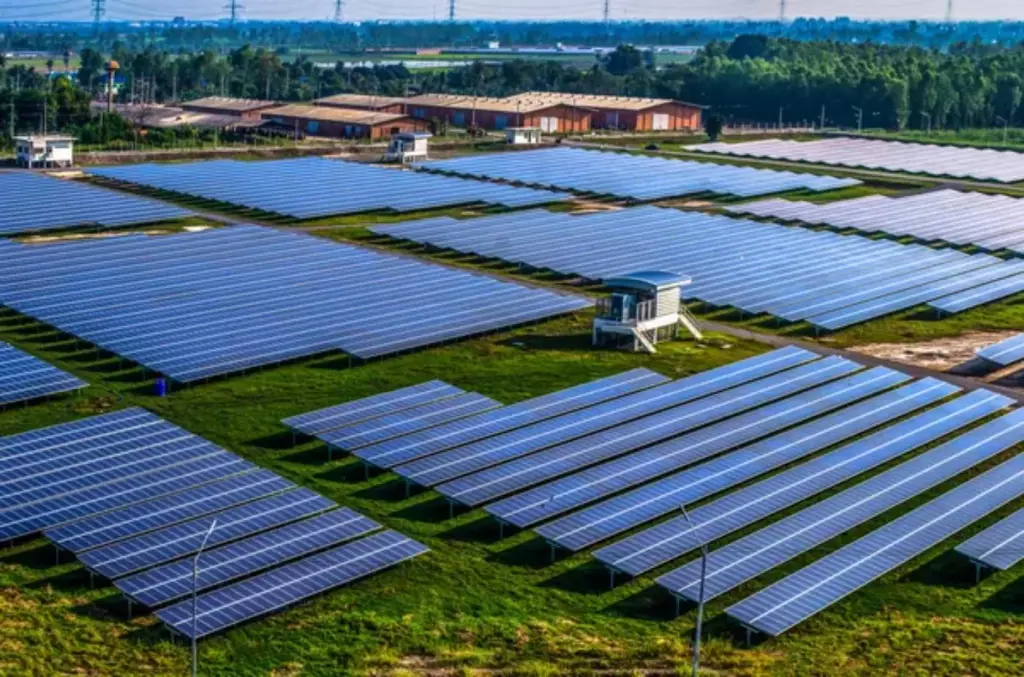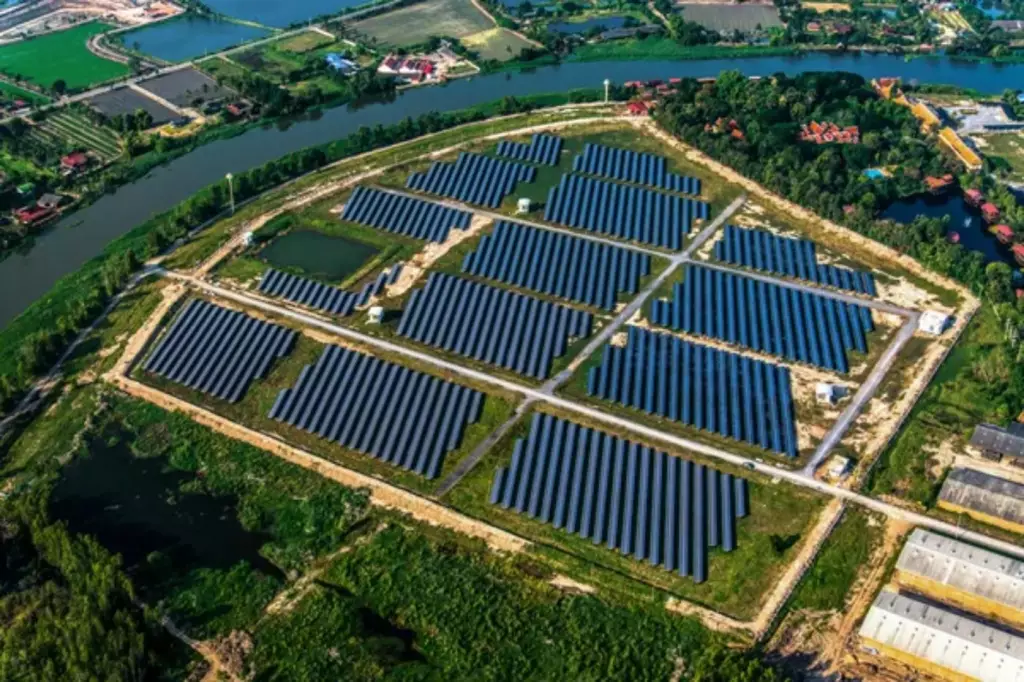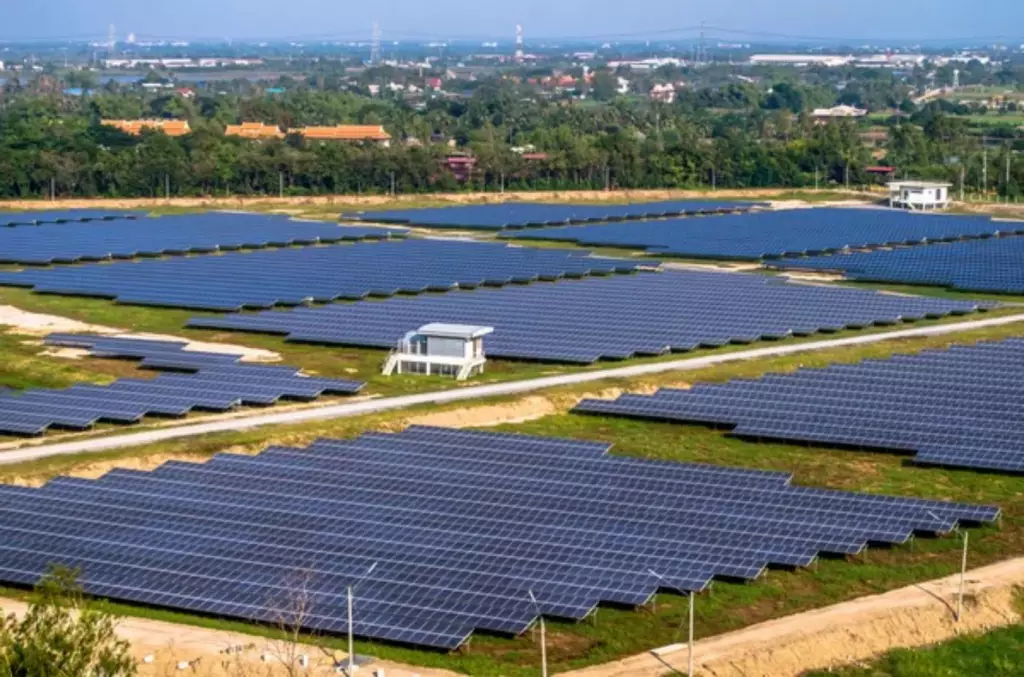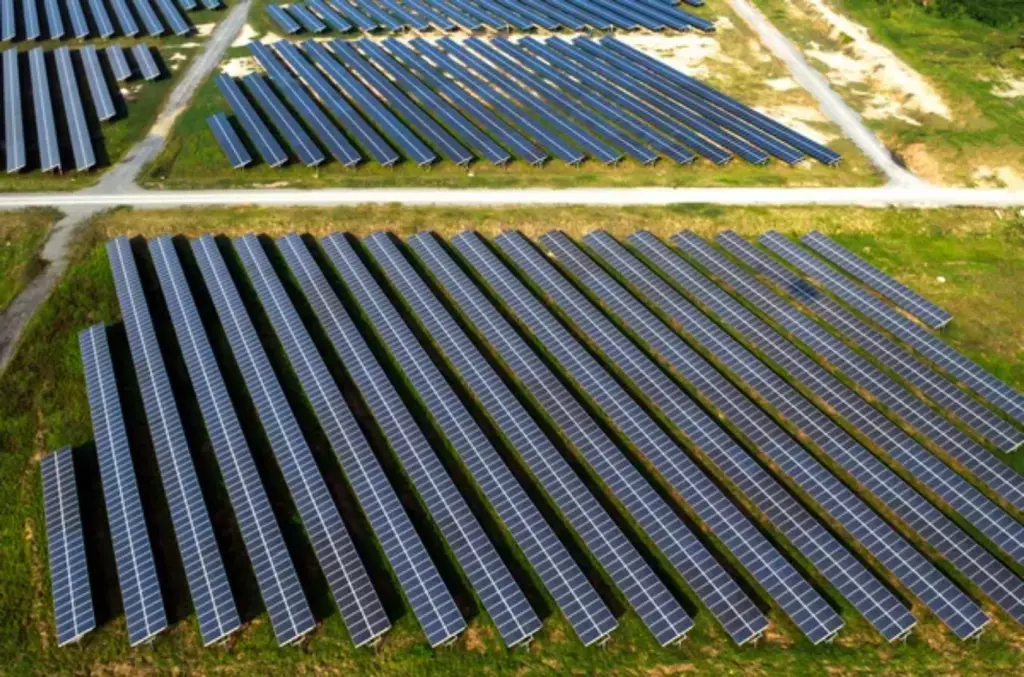Is Solar Farming Profitable? (Full 2024 Breakdown)
Solar farming, the practice of harnessing the sun's energy through vast arrays of solar panels, has gained significant attention as a sustainable energy source. As of 2024, it not only contributes to environmental conservation but also presents a potential income source for landowners and investors. In this article, we'll offer a detailed analysis of solar farming's profitability, examining factors like technological advancements, government incentives, and market trends that influence its economic viability.
Solar farming can be profitable, with average returns of 10-15% annually. Initial setup costs range from $800 to $1,200 per kW of capacity while operating costs are typically low. Revenue depends on local energy prices and solar irradiance levels.
While the initial setup cost can be high, government incentives and falling equipment prices are making it easier to jump in. As you read further, we'll share some tips on how to reduce the overall costs of establishing and maintaining a solar farm.
Summary
- For a solar farm with $500,000 in annual revenue and $425,000 in annual costs, the profit margin would be 15%, in line with the typical industry range for solar farms which ranges from 10-20%.
- The initial costs to build a 1 MW solar farm range from $900,000 to $1.3 million, with solar panels and installation making up the bulk of these costs.
- Ongoing annual costs for a solar farm include 1-3% of total project costs for maintenance, $50,000-$150,000 for insurance, and $0.01 to $0.05 per watt in taxes.

On this page:
Profit Potential of Solar Farms
The profitability of a solar farm depends on various factors, including the average cost of installation, the size of the investment, and ongoing revenue streams.
Cost factors
-
Initial investment: Building a solar farm requires a substantial upfront cost. According to the Solar Energy Industries Association, the cost per watt for a solar farm ranges from $0.89 to $1.01. This places the total cost for a standard 1-megawatt (MW) farm between $890,000 and $1,010,000.
-
Land costs: The land requirement and the associated cost can vary greatly, but generally, you can expect to pay between $300,000 and $500,000 for a 1-acre solar farm.
Revenue factors:
- Electricity generation: The energy produced can be sold back to the grid or to private entities, forming your primary source of income.
- Tax credits: They can significantly lower your investment cost, increasing overall profitability.
Average costs and revenues
| Solar Farm Size (MW) | Average Cost | Estimated Annual Revenue |
|---|---|---|
| 1 | $890,000-$1M | $40,000-$45,000 |
| 5 | $4.45M-$5M | $200,000-$225,000 (scales with size) |
*All figures are estimates and depend on multiple factors, including geographic location.
Your ROI will unfold over time, usually ranging from years to a couple of decades, mainly because of the large initial investment and the nature of electricity income being spread out over the life of the panels.

The cost per watt is inversely related to farm size, meaning larger installations can be more cost-effective per power unit.
Calculating the profit margin
To calculate the potential profit margin:
Profit margin=(Revenue/Net profit)×100%
Let's assume the following for a solar farm:
- Total annual revenue: $500,000
- Total annual costs: $425,000
Now, we calculate the net profit and the profit margin:
- Net profit = Total revenue - Total costs
- Net profit = $500,000 - $425,000 = $75,000
Profit margin = ($75,000 / $500,000) × 100% = 15%
The profit margin for solar farming typically ranges from 10-20%, according to sources like Solar Farm Income Per Acre Calculator. The average solar farm can earn $40,000 per MW installed, so the profit margin depends on factors like installation costs and energy rates, but overall lies within that 10-20% range.
Cost of Building a Solar Farm
When you're examining the profitability of a solar farm, the cost per watt is a fundamental aspect.
Initial costs to build a solar farm
| Initial Cost | Estimated Range |
|---|---|
| Land costs (1 acre) | $300,000 - $500,000 |
| Solar panel installation costs (1 MW solar farm) | $900,000 - $1,300,000 |
| Costs for permits and legalities | $50,000 - $150,000 |
Solar panels and installation costs
| Solar Panels and Installation Costs | Estimated Cost Range |
|---|---|
| Cost per watt | $0.90 - $1.30 |
| 1-MW solar farm | $900,000 - $1,300,000 |
| Power output | Powers 100 - 250 homes |
-
The cost per watt for solar panels typically ranges from $0.90 to $1.30. This means that each watt of solar panel capacity costs between $0.90 and $1.30 to install.
-
For a 1 MW solar farm, the total capacity is 1,000,000 watts (1 MW).
-
Using the cost per watt range, a 1 MW solar farm would cost between $900,000 ($0.90 x 1,000,000) and $1,300,000 ($1.30 x 1,000,000) to build.
-
In terms of power output, a 1 MW solar farm can generally power between 100-250 homes, depending on the amount of sunlight, size of homes, and energy use per home.
Land acquisition costs
The land is the next significant expense, with a 1-acre solar park potentially costing between $300,000 and $500,000. Keep in mind, that climate and space play a critical role in the overall efficiency of your solar installation.

Permit and legalities costs
There are permitting and legal costs associated with developing a solar farm. These include fees for zoning permits, environmental impact studies, grid connection applications, and legal counsel. Estimates for these permitting and legal costs range from $50,000 to $150,000
Ongoing costs
Your annual expenses include maintenance, insurance, and taxes. Maintenance costs typically run low compared to other forms of energy production, but it's an essential part of preserving the efficiency of your solar power station.
| Ongoing Costs | Estimated Cost Range |
|---|---|
| Maintenance | 1-3% of total project costs per year |
| Insurance | $50,000 - $150,000 per year |
| Taxes | $0.01 - $0.05 per watt per year |
Maintenance costs
Solar panels and other equipment need regular maintenance and repairs to keep operating efficiently. This involves cleaning the panels, checking electrical systems, and replacing any damaged components.
Typical maintenance costs range from 1-3% of the total project cost per year. For a 10MW solar farm costing $15 million to build, annual maintenance would be $150,000 - $450,000.
Insurance costs
Solar farms require liability insurance, property insurance, and other policies. Insurance costs depend on the size of the system, location, and coverage details.
For a 10MW utility-scale solar farm, annual insurance premiums often range from $50,000 to $150,000.
Fees for taxes
Solar farms are subject to property taxes and other local taxes. Tax rates and assessments vary significantly by location.
Typical property tax costs range from $0.01 to $0.05 per watt of system capacity per year. For a 10MW system, taxes could be $100,000 - $500,000 annually.
Cost of a 1-acre solar farm
Initial investment
Constructing a solar farm involves various costs from purchasing panels to installation labor. Generally, your initial outlay for a 1-acre solar farm ranges between $300,000 to $500,000.
This broad spectrum accounts for variables like the type of solar panels, efficiency, and location-dependent expenses.
Breakdown of costs
Below is a simplified table that outlines the typical cost ranges per acre involved in setting up a solar farm:
| Cost Component | Estimated Cost Range |
|---|---|
| Solar panels | $200,000 - $350,000 |
| Installation | $50,000 - $100,000 |
| Inverters | $20,000 - $40,000 |
| Balance of system | $30,000 - $60,000 |
| Miscellaneous | $10,000 - $50,000 |
Net profit estimation
After installation, assuming you have an average electricity generation and sell it at market price, you can expect varying yearly revenue.

Let's say, conservatively, you earn $40,000 annually from your 1-acre solar farm after operational expenses. With an upfront cost of around $400,000, you're looking at a break-even point of about 10 years, depending on specific factors such as subsidies and incentives which can significantly reduce initial outlay and accelerate the payback period.
Factors Affecting Solar Farm Profits
When you're exploring the profitability of solar farming, several key factors directly impact your potential earnings, such as the following:
| Factor | Potential Impact on Profits |
|---|---|
| Location | Sunnier locations → More energy output |
| Climate | Less extreme weather → More consistent output |
| Size of acreage | Larger size → Lower costs per unit |
| Initial investment | Lower costs → Higher margins |
| Government incentives | More incentives → Less upfront cost |
| Efficiency | Higher efficiency → More energy output |
-
Location & climate: Your solar farm's location is crucial—proximity to infrastructures like power lines can reduce costs. Also, areas with more year-round sunlight boost energy production, enhancing profitability.
-
Size of acreage: The size of land you dedicate to solar power stations influences economies of scale—larger operations often enjoy reduced costs per unit. If you decide to go off-grid with 3 acres of land, you can set up solar panels for a renewable power source.
-
Initial investment: The upfront cost can be substantial, covering solar panels, inverters, and installation—the lower these costs, the better your margins.
-
Government incentives: Taking advantage of government tax credits and other incentives lowers the financial barrier to entry and can significantly improve profit margins.
-
Efficiency & technology: Invest in high-quality, efficient solar technologies to maximize output and reduce maintenance costs.
Reducing Expenses and Enhancing Earnings in Solar Farms
To ensure your solar farm is as profitable as possible, careful attention must be given to streamlining operations, adopting advanced technologies, and managing finances strategically.
Optimizing solar farm operations
Optimizing your solar farm starts with choosing the right location where sunlight is ample and land costs are lower.
The selection of solar panels is critical; monocrystalline panels are more efficient but costlier, whereas polycrystalline panels are less expensive with slightly lower efficiency. Considering the balance between cost and efficiency is key.
| Solar Panel Type | Efficiency | Cost Range per Watt |
|---|---|---|
| Monocrystalline | High | $1.20 - $1.50 |
| Polycrystalline | Moderate | $0.70 - $1.00 |
Regular maintenance ensures long-term efficiency but aims for minimal intervention. Silent operation and minimal maintenance are inherent benefits of solar power that reduce ongoing costs.
Leveraging technology
Advanced technology can significantly reduce operational costs and boost efficiency. Smart inverters and batteries enable better management of energy supply, potentially increasing your solar farm's ROI by ensuring a consistent and reliable power output.
| Technology | Benefit | Cost Impact |
|---|---|---|
| Smart inverters | Improved energy management | Moderate |
| Batteries | Energy storage for supply stability | High |
Solar capacity can be monitored and adjusted with smart systems, helping to optimize the installed capacity based on real-time data and trends.
Strategic financial management
Your financial approach should include thorough planning for initial investment, financing options, tax incentives, and insurance. These elements can affect the total costs and profitability significantly.
| Financial Aspect | Importance | Effect on Profitability |
|---|---|---|
| Financing | Lower the capital barrier | Improves cash flow |
| Investment | Smart initial spending | Maximizes ROI |
| Insurance | Protect against unforeseen events | Reduces risk |
| Taxes | Take advantage of incentives | Increases net profit |
By securing favorable financing, you're reducing the interest overhead, while wisely managing your investment to ensure maximum efficiency from the onset.
Proper insurance safeguards your operation, and tax considerations can improve your bottom line. Remember, a well-managed solar farm can be not just an environmentally friendly investment, but a financially rewarding one too.
These types of energy farms can also be used to power greenhouse farms, helping them to have less environmental impact, and be profitable as well.
How Do Solar Farms Make Money?

Solar farms generate revenue primarily by converting sunlight into electricity, which they sell to utilities or in markets for renewable energy. Your investment in a solar farm taps into this revenue stream through various financial mechanisms.
Generation and sale of electricity
You earn money as your solar farm produces electrical power and feeds it into the power grid. Payment often comes in the form of Power Purchase Agreements (PPAs), where utilities agree to purchase electricity at a predetermined price.
| Size of Solar Farm | Estimated Earning Range |
|---|---|
| Small (1-5 MW) | $25,000 - $42,000 per MW/year |
| Medium (5-20 MW) | $22,000 - $35,000 per MW/year |
| Large (20+ MW) | $10 million to $50 million per year |
Renewable Energy Certificates (RECs)
Utilities and other entities may buy RECs from you to meet renewable energy standards or for corporate sustainability goals. RECs represent the environmental benefits of your solar farm’s clean energy.
Tax incentives and subsidies
Solar farms often benefit from government incentives, like the Investment Tax Credit (ITC), which allows you to deduct a percentage of the solar farm cost from your taxes, potentially improving your profitability.
In comparison to rooftop systems, solar farms have a lower installation cost per watt, leading to economies of scale for larger installs.



